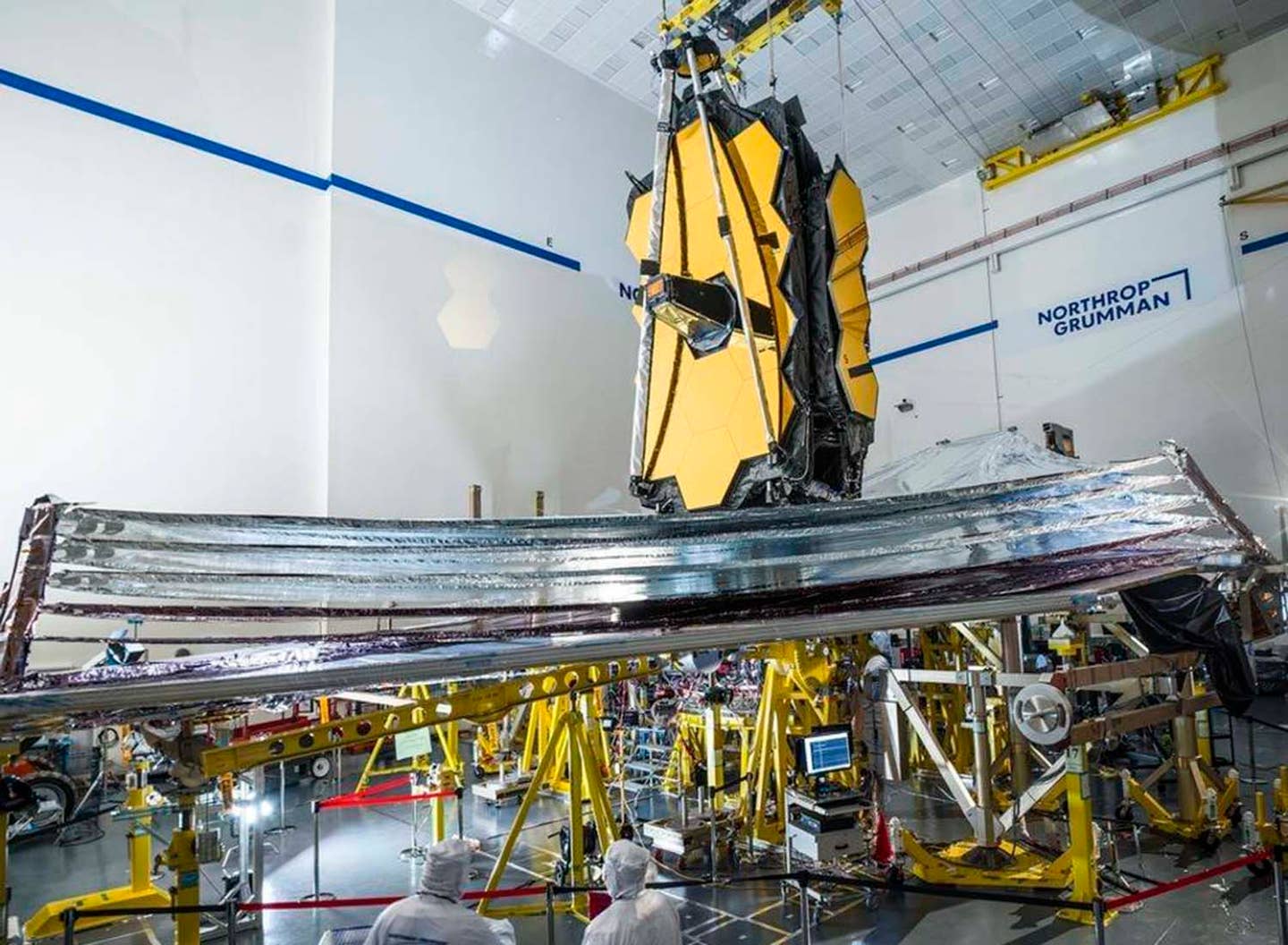James Webb Space Telescope Successfully Deploys Major Components
The James Webb Space Telescope has successfully unfurled its tennis court-sized sunshield and secondary mirror.

The James Webb Space Telescope’s sunshield, seen here during its final deployment test on Earth in December 2020 at Northrop Grumman in Redondo Beach, California. The five-layer, tennis court-sized sunshield is essential for protecting the telescope from heat, allowing Webb’s instruments to cool down to the extremely low temperatures necessary to carry out its science goals. [Photo: NASA/Chris Gunn]
The James Webb Space Telescope has successfully unfurled its tennis court-sized sunshield and secondary mirror—a process that took eight days to complete—NASA confirmed on Tuesday.
Nearing the completion of its deployment, Webb successfully unfolded its secondary mirror—another important checkpoint for NASA’s mission. The secondary mirror serves as the centerpoint for Webb’s iconic gold-coated primary mirrors.
The deployment was streamed live via NASA’s YouTube channel, where a 3D model replicated the telescope’s movements in real time.
CONFIRMED: “The world’s most sophisticated tripod” has not only deployed but also latched!
— NASA Webb Telescope (@NASAWebb) January 5, 2022
Each of the struts for this tripod, which helps #NASAWebb’s secondary mirror direct light into the instruments, is about 25 feet long (7.6 m)! https://t.co/QTAt5yn8zF #UnfoldTheUniverse pic.twitter.com/UtAMG95c9t
Every major component of the telescope is paramount to Webb’s success—if a single one fails, the entire mission is lost. NASA estimates approximately five and a half months until Webb is ready to send images back to Earth.
How it Works
The five ultra-thin kapton sheets work together to reflect light and heat from the sun, moon, and Earth. In order to work properly, the telescope’s instruments must be kept at a temperature of about minus 370 degrees Fahrenheit.
“This is the first time anyone has ever attempted to put a telescope this large into space,” said Thomas Zurbuchen, associate administrator for NASA’s Science Mission Directorate at the agency’s headquarters in Washington.
“Webb required not only careful assembly but also careful deployments. The success of its most challenging deployment—the sunshield—is an incredible testament to the human ingenuity and engineering skill that will enable Webb to accomplish its science goals.”
What Happens Now
Webb’s next major step will be the unfolding of its 18 segmented primary mirrors. Each mirror is coated in a thin layer of gold, about 100 nanometers thick.
Engineers at NASA achieved this by placing the hexagonal mirrors in a vacuum chamber and releasing a small amount of vaporized gold. The mirror is then overlaid with a layer of amorphous SiO2 glass to protect the surface.
The unfolding of the primary mirrors will begin this weekend, after which the telescope will spend months cooling down to its operable temperature.

Sign-up for newsletters & special offers!
Get the latest FLYING stories & special offers delivered directly to your inbox






